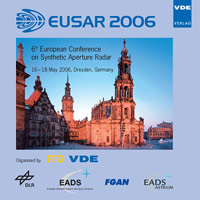Overview Beamforming Principles
Conference: EUSAR 2006 - 6th European Conference on Synthetic Aperture Radar
05/16/2006 - 05/18/2006 at Dresden, Germany
Proceedings: EUSAR 2006
Pages: 3Language: englishTyp: PDF
Personal VDE Members are entitled to a 10% discount on this title
Authors:
Kuhnert, Christiane; Schuler, Karin; Wiesbeck, Werner (Universität Karlsruhe (TH), Institut für Höchstfrequenztechnik und Elektronik, 76128 Karlsruhe, Germany)
Abstract:
The goal of any type of beam-forming is to select a definite angle in space for transmitting and/or receiving signals. For many years this was achieved by moderate to high gain antennas, which had been scanned mechanically over the area of interest. The high gain antennas may be either aperture antennas, like parabolic antennas, or antenna arrays. The flexibility of this type of beam-forming and scanning is rather moderate because the mechanical steering of masses is involved. For the last several years, stimulated by the availability of microwave semiconductors, electronic beam-forming, primarily known as phased array, in the Radar communities appeared. Enormous efforts had been invested in this area and presently already a high number of products, especially in the military area are on the market. Applications range from ground based Radar to space born remote sensing systems. Phased array systems showed a number of major deficiencies like high price, moderate reliability moderate to low power efficiency and high calibration efforts. The upcoming high speed digital signal processing has stimulated ideas for digital beam-forming, applicable in radar and in communications as well. This digital beam-forming seems to form the next generation of agile and intelligent Radar and communication systems as it allows the simultaneous processing of multiple beams and by this a considerable increase in information collection. This introductory paper will present the different beam-forming principles with short examples and it will show an outlook for the future. It is especially intended to place the papers of the special session “Digital Beam-Forming” at EuSAR 2006 in a proper context to technologies and solvable problems.


